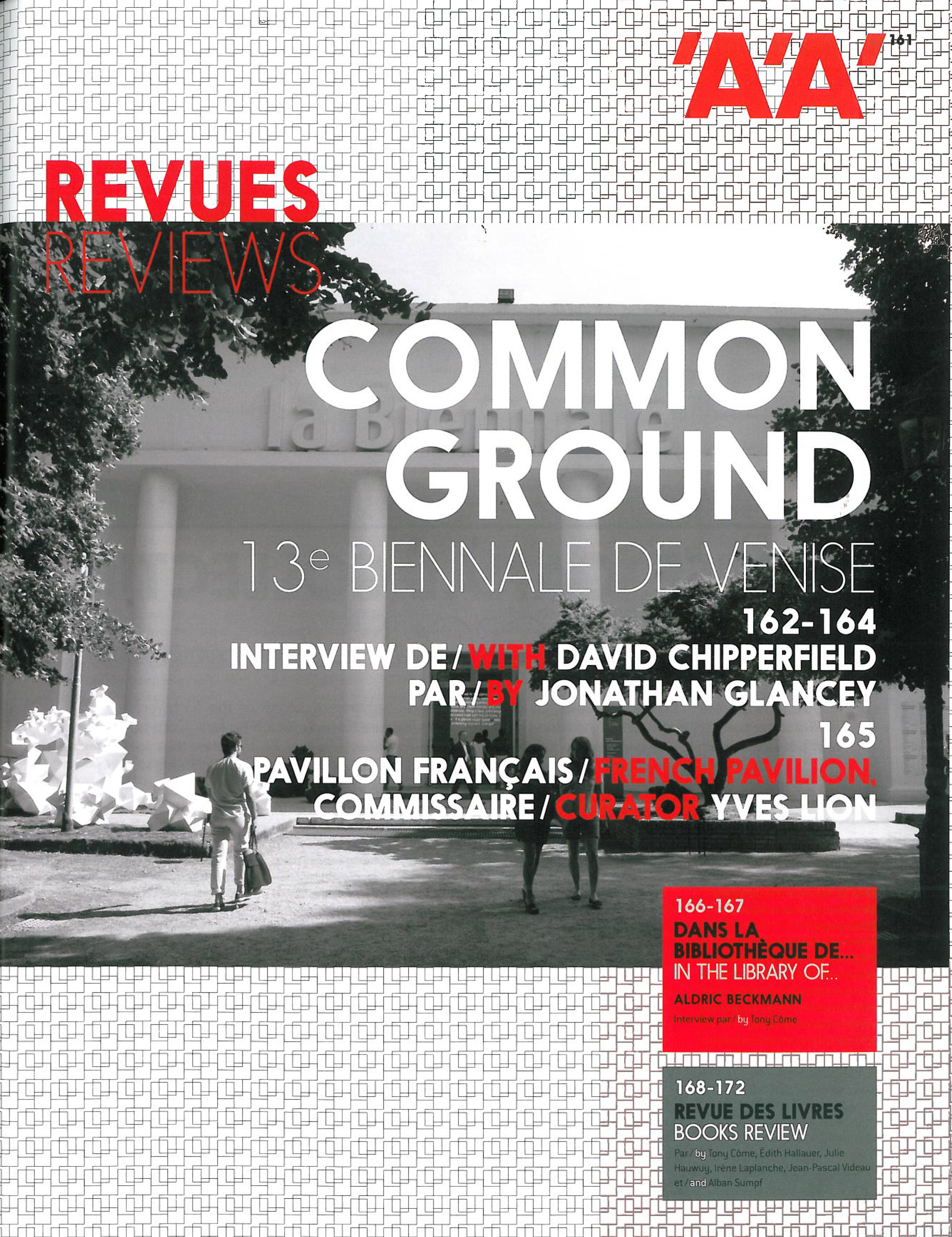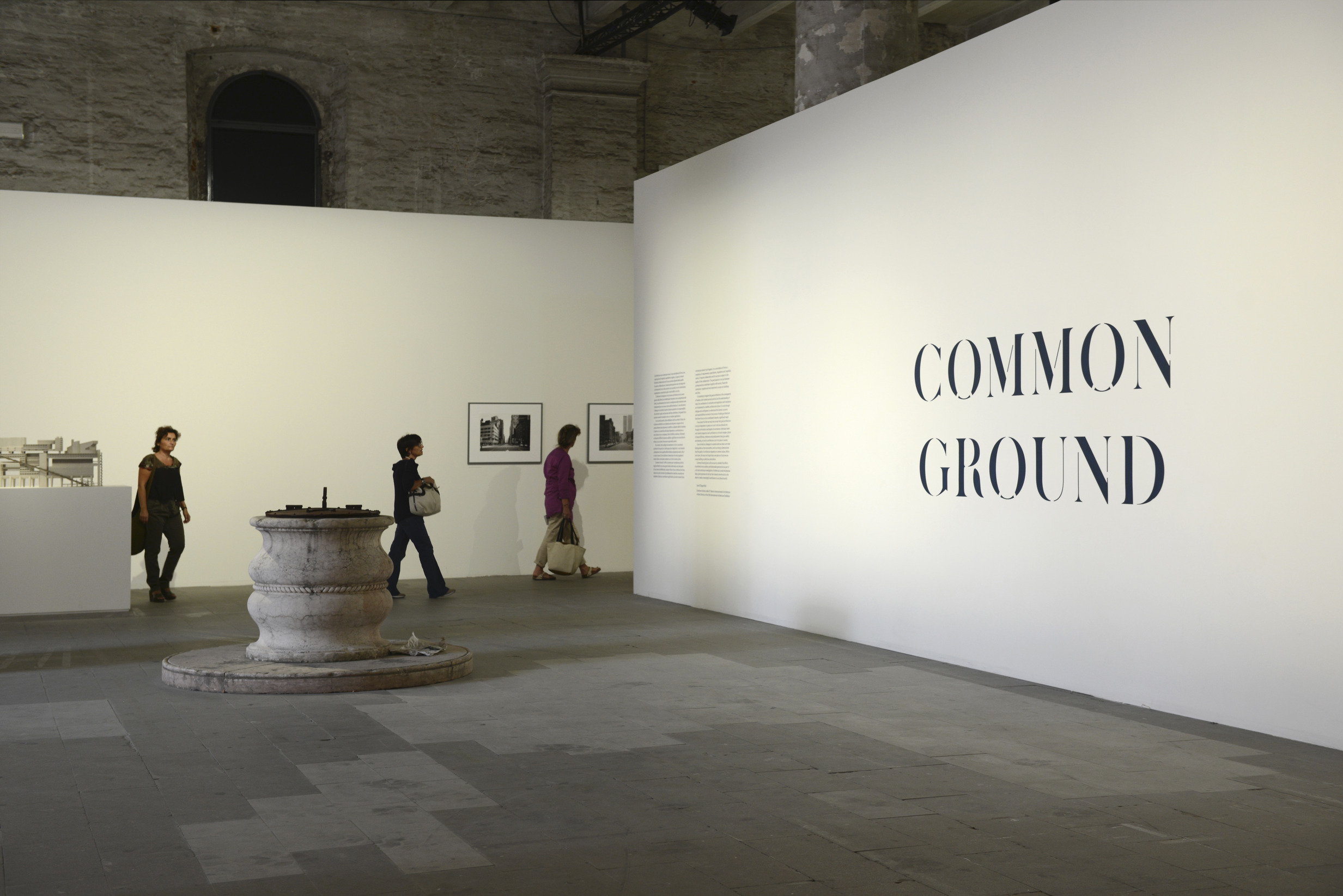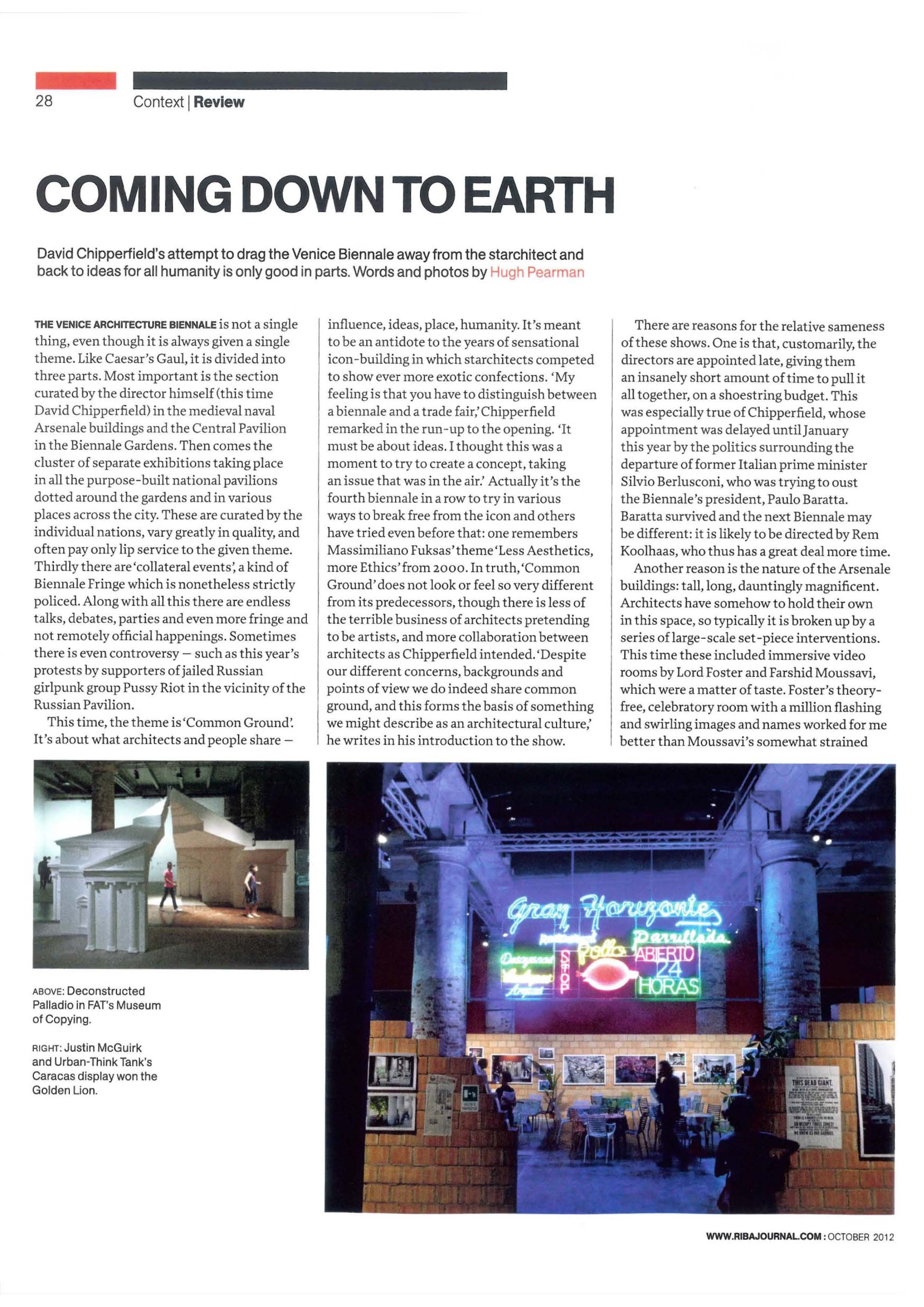'This year's architecture extravaganza, curated by Britain's David Chipperfield, shows how architects are not lone visionaries but do their best work in collaboration with others.'
The Venice Architecture Biennale is the world's grandest celebration and showcase of the design of buildings. Which, as architecture is both an art and a business, means it hovers between being a cultural festival and a trade fair. And, as architects can have a very high opinion of the importance of their work, their exhibits can collectively resemble a set of competing pitches in the trading of rival forms of genius.
Successive directors of the biennale â a new one is appointed each time â are conscious of this. Part of their job is to set a theme for the whole event, which is essentially an enormous set of exhibitions and debates, and they like to invent ones which stress that architects are not always egomaniacs, but have a responsibility to wider society. 'Less Aesthetics, More Ethics'Â was the official title some years ago. In 2010, it was 'People Meet in Architecture'.
This year the British architect Sir David Chipperfield is in charge. It is a sign of his international status, which for years outran recognition at home, and which won him commissions such as the recreation of theNeues Museum in Berlin, home of the bust of Nefertiti, out of the bombed ruins of its old building. For years he seemed too intellectual, too serious for Britain. His native country, however, has caught up recently, with a knighthood, a royal gold medal for architecture and regular appearances on the Stirling prize shortlist, including this year with his Hepworth Gallery in Wakefield.
Under Chipperfield's direction there is a strong British presence among the exhibitors, though not to the point where he could be accused of chauvinism. They are there on merit, running from galactic names likeZaha Hadid and Norman Foster to the young practice Aberrant and the critic Justin McGuirk. Collectively they form a varied and surprising bunch with a taste for playful-but-serious provocation: the spirit of Danny Boyle passes through, one is tempted to say.
Chipperfield's theme is 'Common Ground', by which he means that architects are not lone visionaries, but work in collaboration â with each ther, with builders and clients, with future users and the general public. 'Common Ground' sounds like 'People Meet in Architecture', in that it stresses the non-egomaniac side of the profession. It could be mushy, one of those titles that means anything to anyone, but there is cohesion to this year's biennale. The event makes sense. It is serious, but also engaging.
It is, as always, vast. Part occupies the 16th-century corderie of the arsenal of the Venetian republic, handsome rope-making workshops hundreds of metres long. Here, architects invited by Chipperfield and his team present a series of installations. Part occupies the biennale gardens which, created in 1895 for the Biennale of Art, are almost exactly as old as the modern Olympics, and embody the same ideals of international exchange. (The architecture biennale, first held in 1980, is relatively recent.) The gardens form an unusually leafy part of Venice and house individual pavilions of different countries, a somewhat Eurocentric selection which reflects the leading nations of the world a century or so ago.
Each country mounts its own display, following the overall theme more or less closely. There is also the padiglione centrale (central pavilion) where, as in the arsenal, the director selects the exhibits. Other shows in various off-site locations, including by countries not blessed with pavilions in the gardens, complete the picture. It is by nature a baggy, sprawling thing, exhausting if attempted in one go, which always invites comparison with the really quite nice city in which it is located. As Venice is a permanent exhibition of architecture, the biennale has to find a way to compete.
Highlights include the recreation of a Caracas cafÊ, by Urban-Think Tankand Justin McGuirk, which serves actual Venezuelan food. This is a way of bringing people into an exhibit about the Torre de David, an unfinished banking skyscraper now made into an informal vertical community by squatters, in order to demonstrate how an unplanned piece of city can work as well as one made by architects. The simple device of the cafe means you can experience something of the place, rather than just look at pictures. It also deservedly won the golden lion prize for best exhibit.
A different form of common ground is offered by Folk in a Box, a small structure about the size of a confessional, inside which you find yourself â as an audience of one and in total darkness â knee to knee with a musician. The woman ahead of me in the queue came out weeping with emotion, and while my heart was a little harder it was still an intense experience. Another version again is the display by the Chilean practiceElemental, which describe its attempts to improve the copper-mining town of Calama, a place of exceptional climatic and social brutality. Yet another is the construction site, with its collaboration of many people in a shared purpose, here represented by the reconstruction of a rough-hewn house in India.
Common ground is not always a peaceful place, as the Swiss architects Herzog and de Meuron demonstrate with their exhibit about their plan to build a concert hall, the Elbphilharmonie, on top of an old warehouse in Hamburg. It is currently stalled in mid-construction. Eschewing usual public relations bromides, Herzog and de Meuron bravely paper the walls with newspaper articles that chronicle the early hopes for the project and the escalating rows and budget overruns. Models of the hoped-for building hang in the space and you are left to draw your own conclusions.
Commonness extends to the past. Nicholas Hawksmoor, nearly three centuries dead, features in beautiful photographs by HÊlène Binet. The Britons Caruso St John pay tribute to inspirations including Sir John Soane. There is an exhibit about Mario Piana, who, by restoring some of Venice's crumbling buildings, played a vital but invisible role in the history of architecture. The Swiss Valerio Olgiati has invited other architects to contribute images that inspired them, which are laid out on a table.
The collaborative group Fat (Fashion Architecture Taste) shows a large white model of a fragment of Palladio's Villa Rotonda, as part of its 'Museum of Copying'. Copying, Fat argues, was always an essential part of architecture, and the myth of the utterly original genius is therefore suspect. The Villa Rotonda is possibly the most copied building in the world. If Fat's model, which is shown together with its mould, has a touch of the Rachel Whitereads, that's probably fine too.
All of which â the relative humility, the willingness to acknowledge others â makes an obvious comparison with the recent past. Not long ago, the singular and spectacular were celebrated and masterpieces were commissioned from international stars, financed with the ample spare cash sloshing around the world. Often, these works would be used to distract us from more substantial issues, such as exactly where this money was coming from and where it was going.
Now, as we all know, some of this money didn't really exist at all and in few places are the architectural consequences more conspicuous than in Spain. There, a succession of monuments, retrospectively preposterous, has been beached by lost funding. There were also some very fine buildings in the boom years, but their architects are now mostly unemployed. An exhibit at the biennale commemorates this, with a series of black, tomb-like objects, containing nice white models of what was once possible in Spain.
Now Norman Foster chooses not to stress the sci-fi trophies he designs for Russian oligarchs, but has entered the common ground spirit by inviting thousands of images from architects, critics and others and displaying them in a dizzying, multi-screen environment that flashes Egypt's Tahrir crowds and developing-world shanty towns past your eyes, along with more peaceful public places and notable works by Foster and other architects. The link is not always obvious â how exactly does this glass atrium connect with that Indian street? It's also like HSBC's advertisements â we're international and corporate and caringand global â but it shows an altered mood.
It has become a truism, this transition in the world of architecture from selfish icons to something more caring, and one that is not entirely true. There is still plenty of appetite in many places for flashy spectacle and I doubt if architects have collectively become radically nicer or were all unrelievedly selfish before. A complicating exhibit in this respect is one by Renzo Piano: he shows the Shard from many viewpoints. It's clearly a work of the icon era, but Piano shows it as part of the common ground of London, almost as a piece of folk art, and it's not obvious that he's wrong.
But there is an atmosphere of generosity in Chipperfield's biennale that should be appreciated. There's also patience and care, exemplified by the returning popularity of crafted and handmade objects, such as a very large city plan hand drawn by the South African Jo Noero, or a long scroll in the British pavilion with a detailed image of an imagined Sino-English townscape. The mood is calmer, slower and more spacious than in previous years and the architects involved seem to be quite happy not to be engaged in frenetic rivalry for totems of status.
The national pavilions are more of a mixed bag. Some of the better moments are provided by the legacy of the Soviet Union, with an intriguing exhibit in the Russian pavilion of the closed, secret cities dedicated to military, space and nuclear technology. An Estonian space in the arsenal reveals a 3,000-seat concert hall, built when Tallinn hosted the regatta of the 1980 Olympics, which is now abandoned. The British pavilion, the result of a complex interaction between Britain and other countries, is too elaborate for its own good, but it has several gems. These include de Rijke Marsh Morgan's proposal for floating houses, based on Dutch examples.
It remains to be seen how substantial will be the mood of common ground outside the biennale. A cautionary exhibit by Rem Koolhaas's practice OMA shows 'Architecture By Civil Servants', from the 1960s and 70s, when it was still common for cities to have large in-house architectural departments. Their works were not always flawless, but they display a public spirit that is now threatened. Prominent among OMA's examples are the Hayward Gallery and Queen Elizabeth Hall, currently due to be submerged by shops. One can at least hope. Chipperfield shows an attractive, thoughtful attitude to doing things that certainly should be more widespread. It also happens to make a more enjoyable and accessible biennale than many. They can be opaque affairs, not to be recommended to non-specialists, but this one is worth the detour.



